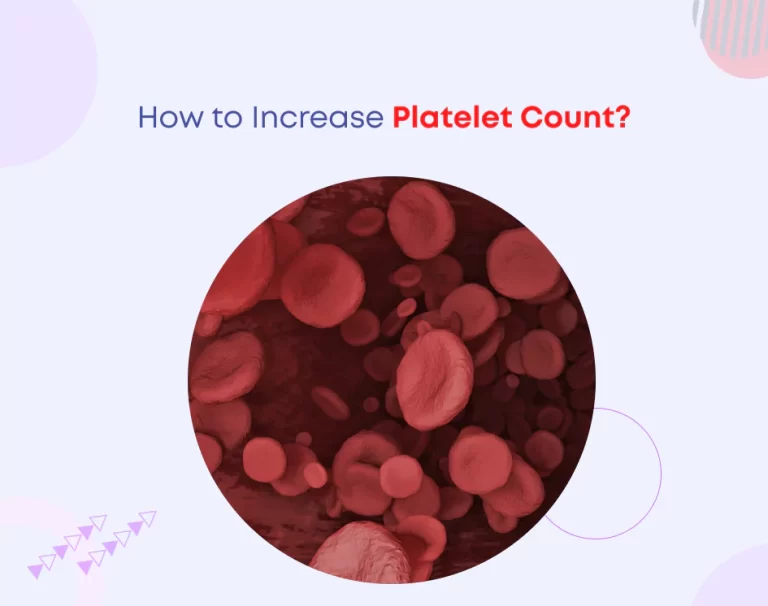
How to Increase Platelet Count?
Platelets, or thrombocytes, are an essential blood component that help with clotting and prevent excessive bleeding. A healthy platelet count is crucial for maintaining normal blood circulation and overall health.
When the platelet count drops below the normal range (usually 150,000 – 450,000 platelets per microliter of blood), a condition known as thrombocytopenia occurs. While there are medical treatments for low platelet counts, many people seek natural remedies to boost platelet levels.
In this article, we will explore how to increase platelet count using dietary adjustments, lifestyle changes, and some home remedies.
Why Are Platelets Important?
Platelets are small, colorless cells in the blood that play a key role in clot formation. When a blood vessel is injured, platelets rush to the site of injury to form a clot, preventing excessive bleeding. A healthy platelet count is vital for:
Preventing excessive bleeding: Platelets are the body’s first line of defense against blood loss.
Wound healing: Platelets help in tissue repair and healing by promoting blood clotting.
Maintaining overall health: Low platelet levels can lead to fatigue, easy bruising, and more serious health issues like internal bleeding.
Causes of Low Platelet Count
Multiple factors can lead to a low platelet count. Common causes include:
Medical Conditions
Autoimmune diseases: Conditions like lupus and rheumatoid arthritis can cause the immune system to attack and destroy platelets.
Viral infections: Infections such as dengue fever, HIV, hepatitis C, and COVID-19 can reduce platelet production.
Bone marrow disorders: Diseases affecting the bone marrow, such as leukemia, aplastic anemia, and myelodysplastic syndromes, can interfere with platelet production.
Certain cancers: Lymphoma and other cancers may affect the bone marrow’s ability to produce platelets.
Medications: Some antibiotics, chemotherapy drugs, and anticonvulsants can lead to thrombocytopenia.
Dietary Deficiencies
Vitamin B12 deficiency: B12 plays a crucial role in the production of red blood cells and platelets. A lack of Vitamin B12 can lead to low platelet levels.
Iron deficiency: Iron is necessary for hemoglobin production, which supports overall blood health.
Folate deficiency: Folate plays a crucial role in cell division and blood production. A lack of folate can impair platelet production.
Lifestyle Factors: Excessive alcohol consumption and smoking can affect bone marrow function and reduce platelet production.
Symptoms of Low Platelet Count
- Easy or excessive bruising
- Prolonged bleeding from cuts
- Frequent nosebleeds or gum bleeding
- Blood in urine or stools
- Fatigue and general weakness
- Petechiae (small red spots under the skin)
Treatment for Low Platelet Count
Treatment for low platelet counts depends on the severity and underlying cause. Medical interventions may include:
Corticosteroids: These drugs can suppress immune system activity and reduce platelet destruction in autoimmune conditions.
Immunoglobulin therapy (IVIG): This can boost platelet levels temporarily, often used in emergencies.
Thrombopoietin receptor agonists: These medications encourage the bone marrow to increase platelet production.
Blood or Platelet Transfusions: In severe cases, platelet transfusions can provide immediate relief and prevent excessive bleeding.
Treatment of Underlying Conditions
Addressing infections, autoimmune diseases, or bone marrow disorders can help restore normal platelet levels.
Dietary Adjustments
Vitamin B12-rich foods: Eggs, dairy products, poultry, fish, and fortified cereals.
Iron-rich foods: Leafy greens (spinach, kale), legumes, red meat (in moderation), and nuts.
Folate sources: Asparagus, citrus fruits, and fortified grains.
Lifestyle Tips for Healthy Platelet Levels
Manage Stress: Chronic stress can negatively affect immune function and overall health. Incorporate relaxation techniques like yoga, meditation, and deep breathing exercises.
Avoid Alcohol and Tobacco: Limiting or avoiding alcohol and smoking can help maintain healthy platelet production.
Stay Hydrated: Drinking enough water supports overall blood health and helps maintain normal circulation.
Regular Exercise: Moderate exercise, such as walking or swimming, improves circulation and supports immune function.
Conclusion
Increasing platelet count involves a combination of medical treatment, dietary improvements, and lifestyle changes. Addressing vitamin and mineral deficiencies, managing stress, and treating underlying medical conditions can help improve platelet levels. If you experience persistent symptoms of low platelet count, consult with us for proper diagnosis and treatment.






